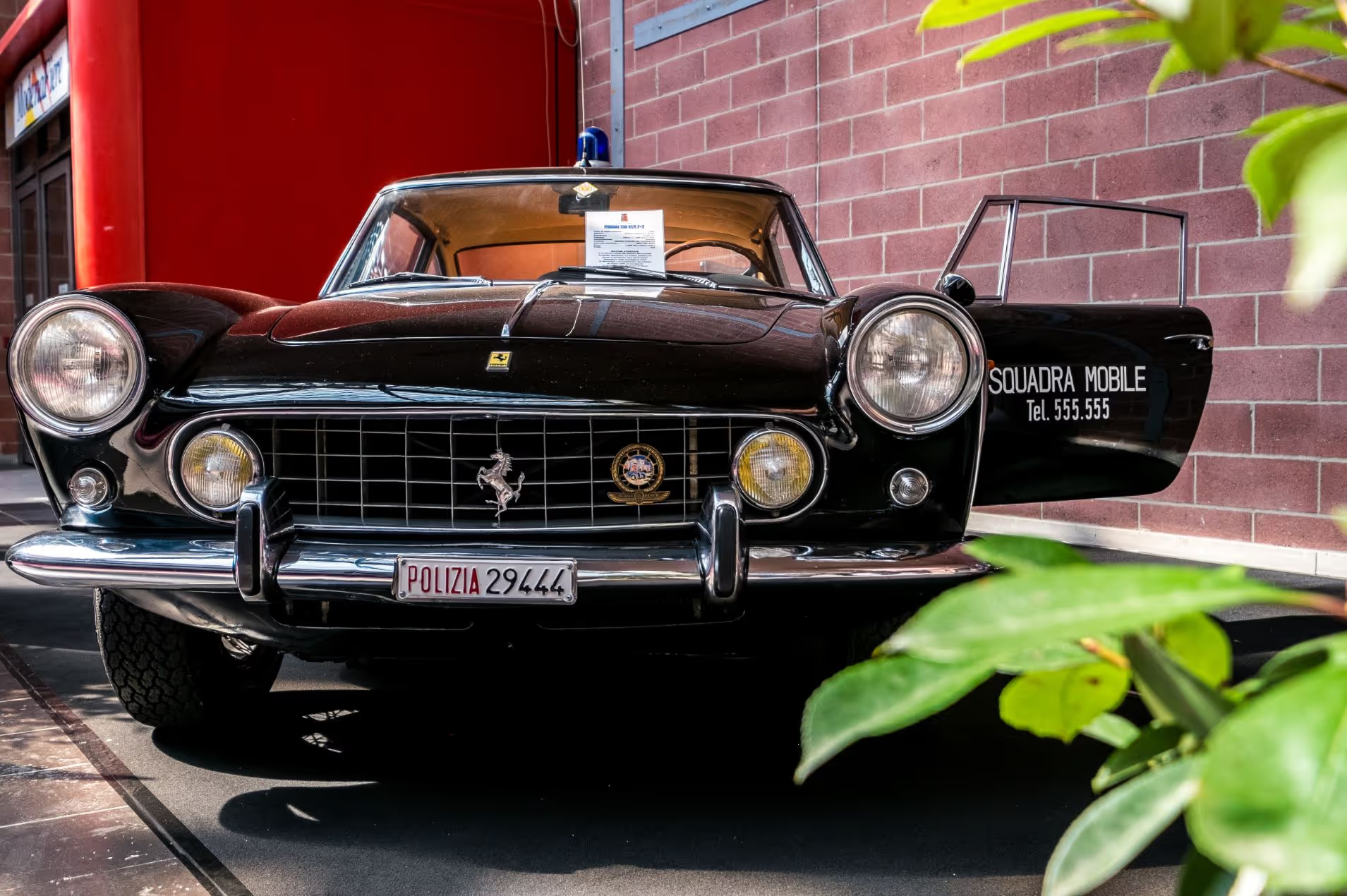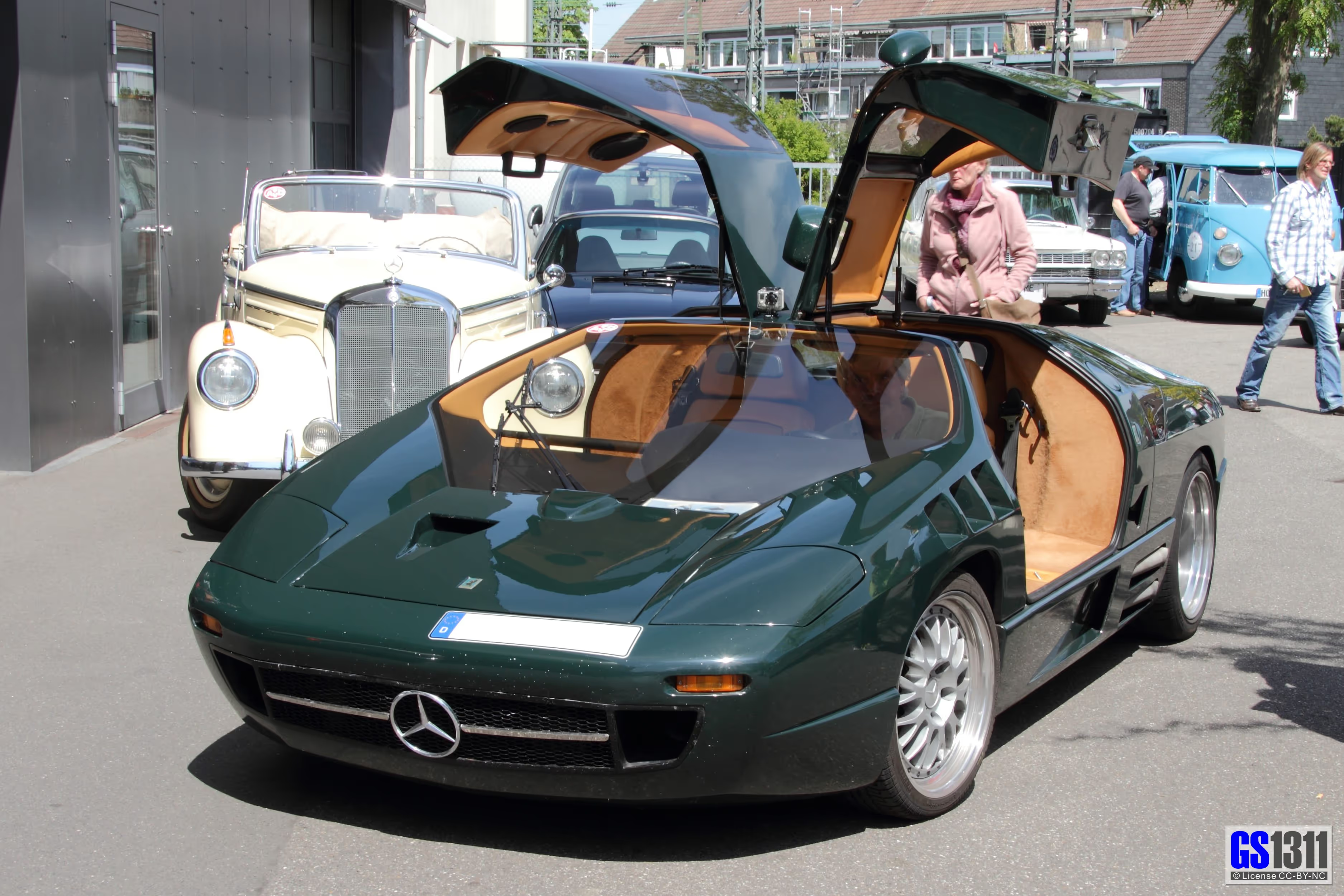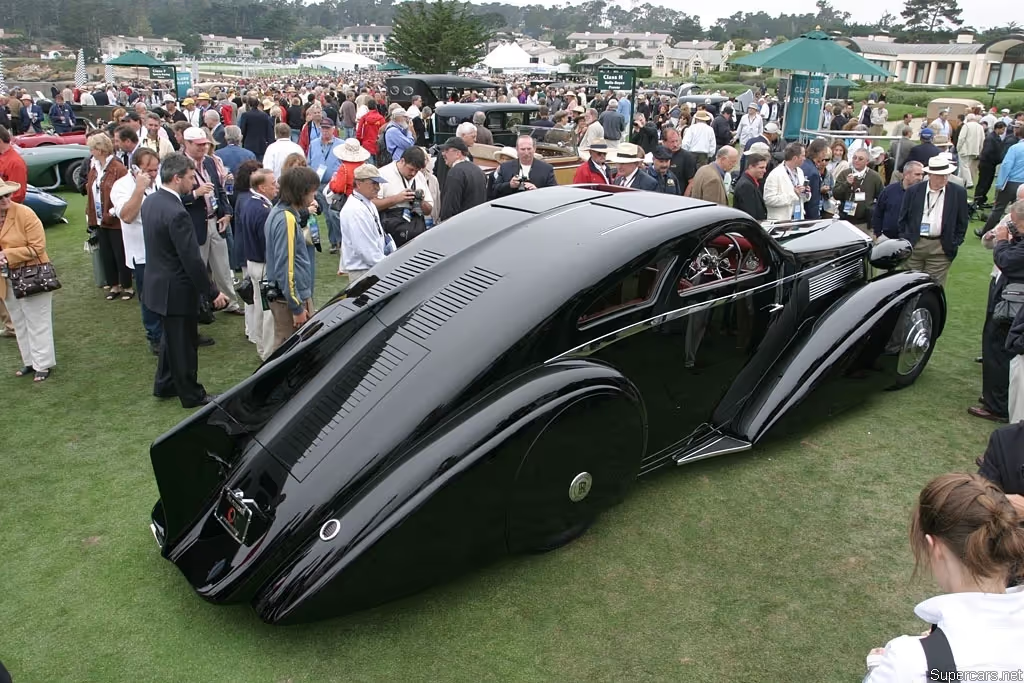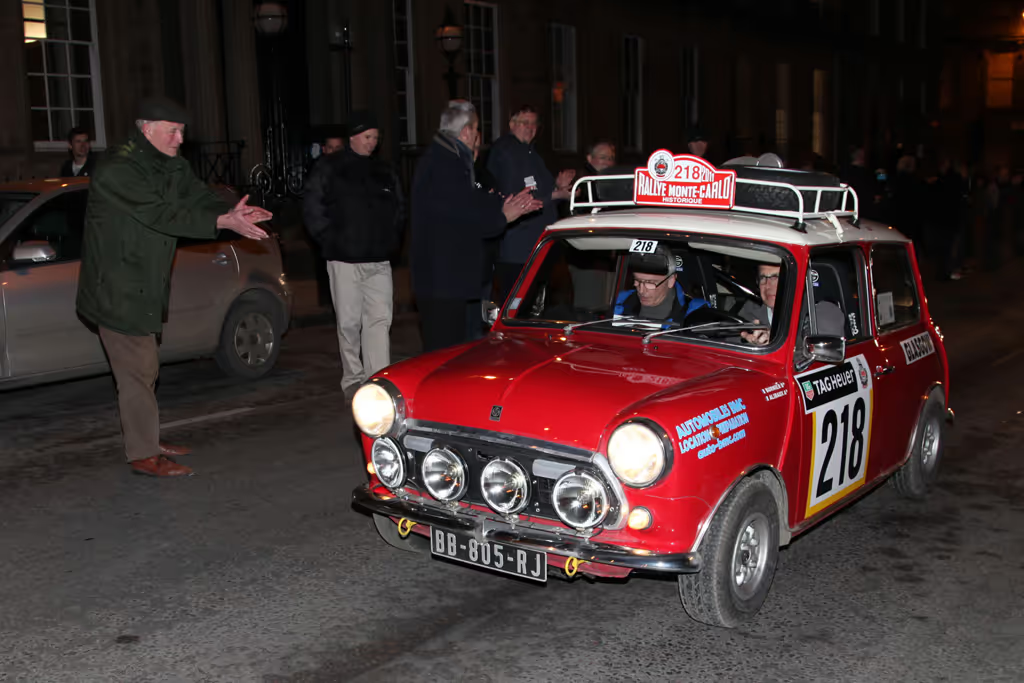Classic car stories from around the world

In order to understand the market for classic cars, it is not enough just to look at developments at the macro level. At the micro level, there are individual, exciting stories that impressively express the emotionality of the asset class and can explain the sometimes rapid increase in value. Similar to a work of art, vehicles also contain an exciting history and history — with the difference: You can drive them.
Our favorite stories
Rome's most famous police car: Ferrari 250 GTE
In the early 1960s, Rome's police unit did such a good job fighting organized crime that the Italian President asked them what they would like to see as a sign of recognition. A joking answer was: “A Ferrari.” The president managed to gift them two, which of course caused a great deal of excitement. In fact, the excitement was so great that one of the two had an accident on the first day of testing and the other two weeks later.
The coolest car name of all time
The Isdera Imperator 108i was a German super sports car that was produced in small series from 1984 to 1993. The Imperator 108i was developed from the Mercedes-Benz CW311 concept car from 1978. Eberhard Schulz, who previously worked as a designer for Mercedes-Benz, managed an engineering office that designed the CW311 concept. Since Mercedes-Benz had no interest in bringing the CW311 into production itself, he allowed Schulz to produce the vehicle under his own brand Isdera. Imperator is also probably the best car name in the world, closely followed by Interceptor.

pounds of gold
Nicknamed the “Round Door Rolls”, this 1925 Rolls Royce Phantom I Jonckheere Coupe is truly a masterpiece of pre-war coachbuilding. Even before its rebirth by Belgian coachbuilder Jonckheere in 1932, the car passed through many owners in several countries, but after that it became even wilder: Once it was painted by an American owner with a few pounds of real gold flakes and drove from city to city to be presented like a circus attraction.

David versus Goliath
It was the sensation in the 1963/64 winter rally season: A small red mini with a white roof proudly showed its exhaust pipe to all larger participants, took overall victory in the Monte Carlo Rally and then repeated this success in season 65. The tiny car immediately became a legend: Originally designed as an inexpensive and economical means of transportation, the mini became the Mini Cooper S. There was still no other car on the market that was for such little money could offer so much sporting performance.

“A willing workhorse with the body of Brigitte Bardot”
The increasingly popular Volvo P1800 is one of the few classic European sports cars of its year that still reliably runs for thousands of miles today. The famous Irv Gordon drove his 1966 model more than three million miles, making the P1800 the most durable car in history. “It is a willing workhorse with the body of Brigitte Bardot.”
This 1800ES, redesigned as a “shooting brake” with a frameless glass hatch, was the last iteration of the model. It is powered by the indestructible B20 engine with Bosch K-Jetronic injection. Around 8,000 units were built before production was discontinued in 1973. In Germany, it is also known as “Schneewittchensarg”.

slipstream
If you're trying to break the bicycle land speed record, you need something fast that provides slipstream! Jean Claude Rude used a Martini-Porsche 935 for his experiment in 1979, which was heavily modified for his purpose. Porsche engineers even equipped the race car with a side exhaust so as not to burn the cyclist's legs when the 800 hp engine spews flames. The high-speed drive took place on the famous VW test track Ehra-Lessien, with racing driver legend Henri Pescarola at the wheel of the 935. During his first run, a tire burst on Rude's bike at 160 km/h and almost caused a fatal crash. In the second race, he used more stable tires, but despite his best efforts, he was unable to set a new record. The previous record was set in 1962 behind a Mercedes-Benz 300SL with 204.7 km/h.
20,000 km with an average speed of 209 km/h
We all know and love the 911 2.7 RS, but we can't ignore the car that inspired this brilliant machine. As early as 1967, 6 years before the RS, Ferdinand Piëch created the 911 R, a 911 S stripped of all unnecessary weight. Although the uniform steel body was retained, everything that was bolted to it — such as the hood, doors and fenders — was replaced by fibreglass panels. Plexiglass replaced heavy windows and metal parts were fitted with holes. These and other measures resulted in the 1,030 kg of a standard Porsche 911 S being reduced to 800 kg in the end. The 911 R remains the lightest 911 the factory has built to date. In terms of engine technology, Piëch opted for the 210 hp aluminum six-cylinder model 901/22, as it was primarily used in Porsche racing models 906 and 910. The 911 R set a world record of 20,000 km with an average speed of 209 km/h. It was only later that the team discovered that the engine of the record car was not, as expected, a freshly overhauled unit, but had already spent 100 hours running continuously on the factory's own test track in Weissach. That is German engineering par excellence.
The most expensive car in the world
The Ferrari 250 GTO, known as “the most expensive car in the world” (last auction price: 48.4 million dollars in 2018), embodies class, wealth, decadence and therefore fragility. However, these cars were built as workhorses to endure grueling racing conditions and to be driven over extremely long periods of time. This 250 GTO Series II was heavily challenged by the rough Sicilian roads at the 1964 Targa Florio, but it remains in the lead, wears his battle scars with pride and still looks stunning. There are only three 250 Series II GTOs ever built (1964), and they had a body with wider fenders than the original, a recessed rear light and flying butt-arch sail fields. The new roof was borrowed from the mid-engined 250 LM, which the FIA had denied homologation for the GT class. The newly built cars brought the total production of the GTO (minus the prototypes) to 36 and 39, if you include the 4-liter cars.

This brief insight into our favorite automotive stories shows what makes the classic car cult so special. As part of human cultural history, they embody diverse, astonishing stories and function as a useful relic from an earlier period. Anyone who has ever driven in a classic car can feel what this journey into the past and the change of perspective on the world feels like.



